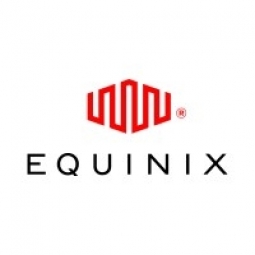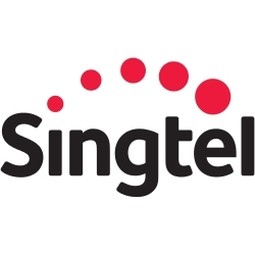Equinix

Overview
|
HQ Location
United States
|
Year Founded
1998
|
Company Type
Public
|
Revenue
$1-10b
|
|
Employees
1,001 - 10,000
|
Website
|
Stock Ticker
NASDAQ:EQIX
|
Twitter Handle
|
Company Description
Equinix (Nasdaq: EQIX) is the world’s digital infrastructure company, enabling digital leaders to harness a trusted platform to bring together and interconnect the foundational infrastructure that powers their success. Equinix enables today’s businesses to access all the right places, partners and possibilities they need to accelerate advantage. With Equinix, they can scale with agility, speed the launch of digital services, deliver world-class experiences and multiply their value. see less
IoT Snapshot
Equinix is a provider of Industrial IoT infrastructure as a service (iaas), application infrastructure and middleware, and networks and connectivity technologies, and also active in the automotive, cities and municipalities, equipment and machinery, finance and insurance, healthcare and hospitals, telecommunications, and transportation industries.
Technologies
Functional Areas
Industries
Services
Technology Stack
Equinix’s Technology Stack maps Equinix’s participation in the infrastructure as a service (iaas), application infrastructure and middleware, and networks and connectivity IoT Technology stack.
-
Devices Layer
-
Edge Layer
-
Cloud Layer
-
Application Layer
-
Supporting Technologies
Technological Capability:
None
Minor
Moderate
Strong

Supplier missing?
Start adding your own!
Register with your work email and create a new supplier profile for your business.
Case Studies.

Case Study
Digital Transformation in the Cloud Enhances Government Efficiency: A Case Study on DVSA
The Driver and Vehicle Standards Agency (DVSA), an executive agency of the UK government, was facing a significant challenge in its digital transformation journey. The agency was transitioning away from long-term contracts, minimizing vendor lock-in, and moving towards open source and cloud solutions. This shift was aimed at improving efficiency, adding flexibility, and gaining value for money. However, the agency was encountering issues with its connectivity. DVSA was connecting to the cloud via virtual private networks (VPNs), but the VPN firewall ran out of capacity, necessitating an alternative solution. The challenge was to find a solution that would provide fast, reliable connectivity, essential for the agency's digital transformation.
Case Study
Revolutionizing Catastrophe Risk Modeling: A Case Study of Simplitium and Equinix
Simplitium, a UK company delivering ModEx, a catastrophe risk modeling platform for the (re)insurance industry, faced a significant challenge. The industry had been relying on outdated technology for the better part of three decades, using resource-heavy, legacy in-house hosting systems. These systems were used to analyze risks and potential damage of events such as natural catastrophes, helping (re)insurers calculate the financial implications to ensure they have enough capital to pay the claims and remain solvent. However, as cloud and hosted environments developed significantly, these legacy systems became increasingly inefficient and costly. Simplitium needed a reliable colocation partner with a strong presence in the insurance sector to help grow its customer base. They required a solution that would offer clients faster roll outs, lower costs, and zero downtime.
Case Study
Global Media Service Provider Enhances Workflow and Collaboration with IoT
Avid Technology, Inc., a global SaaS media production solution provider, was faced with the challenge of enabling efficiencies and real-time collaboration across creative teams in the production process, without compromising performance or security. The company needed to deploy a cloud-based, global, online editorial suite to increase efficiencies in creating, editing, and enabling final production of media in a rapidly changing business landscape. The challenges also included capturing global customer access and scaling with quick deployment capabilities in a collaborative environment, connecting a diverse group of global users, ensuring high availability, optimizing application performance and usability by interconnection to a large number of global networks, and securing assets while allowing multiple contributors simultaneous access.
Case Study
Digital Transformation in the Cloud Drives Government Efficiency
Digital transformation is driving the distribution of services and controls closer to customers, employees, partners, and ecosystems worldwide, in government as well as in business. With the goal of improving efficiency, adding flexibility, and gaining value for money, the UK government is undertaking a digital transformation. Like other government agencies, DVSA is transitioning away from long-term contracts, minimizing vendor lock-in, and moving to open source and cloud where possible—making fast, reliable connectivity essential.
Case Study
IoT-Driven Predictive Maintenance: Siemens' Real-Time Data Solution
Across Europe, billions of Euros are being invested in upgrading rail infrastructure with the aim of carrying more passengers, on more trains, more regularly, with on-time arrival, at a lower cost. Siemens, a leader in engineering solutions for the rail industry, is at the forefront of this transformation. The company uses data collected from over 300 sensors on each train, combined with historical data, to predict when components might fail. This IoT-driven approach, dubbed the 'Internet of Trains', ensures greater uptime for train operators, fewer delays for passengers, and more cost-effective maintenance. However, the challenge for Siemens lies not in the collection, but in the storage, management, and analytics of this vast variety of data. Furthermore, as an international company, Siemens must ensure that the data is stored according to local laws in the most cost-effective way possible.
Case Study
Celero's Digital Transformation with Equinix: Enhancing Financial Services and Infrastructure
Celero, a leading Canadian provider of integrated financial technology solutions, faced the challenge of meeting the evolving needs of its credit union customers. These customers, often located in small communities and rural areas, lacked the resources to build innovative, personalized digital services themselves. Celero aimed to modernize its IT infrastructure to help these credit unions meet their members' demands and stay competitive in a rapidly changing industry. The company wanted to initiate its digital transformation swiftly, integrating new cloud-optimized capabilities into its existing IT infrastructure without disrupting legacy systems. Celero also had a long-term goal of preparing for a future industry landscape defined by microservices and cloud-native solutions. Additionally, the company was committed to sustainability and aimed to reduce its carbon footprint by moving workloads to Equinix and the cloud, retiring on-premises data centers that weren't built using the latest sustainability innovations.
Case Study
BMC Software's Digital Transformation with Equinix: A Case Study
BMC Software, a global leader in innovative software solutions, was faced with the challenge of migrating its growing global business to a more automated, digital IT service delivery and support desk model. The company needed to cater to its 700,000+ core SaaS subscribers and 1,200+ SaaS customers worldwide. The requirement was to transform its service delivery systems and support methods to more innovative, “smart” digital IT platforms with greater interconnection. This was to increase the performance, reliability, and security across its 14 global data centers. The challenge was not just to migrate but to ensure a seamless transition without impacting the service levels for its vast customer base.
Case Study
Hybrid Multicloud Enhances Network Security and Speed for VESI IT Services
VESI IT Services, the internal IT service provider of VINCI Energies in Germany, was struggling to keep pace with the rapid growth of the company. The demand ranged from simple infrastructure to complex system solutions. The major challenge was to simplify the rollout of new technologies, speed up digital transformation, save energy, and distribute services and controls closer to customers, employees, partners, and ecosystems. The VESI IT Services team in Germany was tasked with consolidating five data centers into a single service offering. The initial situation ranged through all of the IT evolutionary spectrum, from physical servers to public cloud services. In addition, the solution needed to be secure, protecting sensitive data related to people, processes, and IT systems.
Case Study
Accelerating Payment Processing Solutions at the Digital Edge: A Case Study on Conductor and Equinix
Conductor, a Brazilian company specializing in payment method solutions and processing, faced a significant challenge in raising the availability of its environment with a reduced staff. The company had previously migrated from its in-house operation to Equinix colocation environments in São Paulo International Business Exchange™ (IBX®) data centers. However, two years later, the company was struggling to maintain high availability with a smaller team. The challenge was to find a solution that would allow Conductor to continue to grow and innovate its payment processing solutions while maintaining high availability and performance.
Case Study
Digital Transformation in the Cloud: Enhancing Government Efficiency with Equinix Fabric
The Driver and Vehicle Standards Agency (DVSA), an executive agency of the UK government, was facing challenges in its digital transformation journey. The agency was transitioning away from long-term contracts, minimizing vendor lock-in, and moving to open source and cloud where possible. However, the agency was connecting to the cloud via virtual private networks (VPNs), and their VPN firewall ran out of capacity. This situation necessitated a new solution that could provide fast, reliable connectivity. The goal was to improve efficiency, add flexibility, and gain value for money, while bringing services and controls closer to customers, employees, partners, and ecosystems worldwide.

Case Study
VTM, Equinix and Tele2 IoT Deliver Mission-Critical Communication for Emergency Services
VTM, an IT communications provider, was faced with the challenge of ensuring fast, secure, and reliable communication for the mission-critical industries it serves, including content streaming, water management, energy, and emergency services. The company needed to deliver end-to-end interconnection that accelerates machine-to-machine (M2M) data traffic to its customers without going over the public internet. The challenge was to provide low-latency connectivity, ensuring high-performance, secure communication with no interruptions. The industries served by VTM, such as fire, ambulance, and environmental safety services, require continuous communication across their IoT devices, as any disruption in service could potentially lead to loss of life.
Similar Suppliers.

Supplier
IBM
IBM is an American multinational technology and consulting corporation that manufactures and markets computer hardware, middleware, and software, and offers infrastructure, hosting, and consulting services in areas ranging from mainframe computers to nanotechnology. IBM is intent on leading the development of a global data field.

Supplier
Cognizant
Cognizant is a provider of information technology, consulting and business process services. Its customers are primarily corporations from the Forbes Global 2000, and it targets customers in the financial services, health care, manufacturing, retail, and logistics sectors. Year founded: 1988 Revenue: $14.8 billion (2017) NASDAQ:CTSH

Supplier
Infosys
Infosys is a global leader in consulting, technology, and outsourcing and next-generation services. They help enterprises transform and thrive in a changing world through strategic consulting, operational leadership, and the co-creation of breakthrough solutions, including those in mobility, sustainability, big data, and Cloud Computing.
---nyse--hpe_1.jpg)
Supplier
Hewlett Packard Enterprise (HPE)
Hewlett Packard Enterprise or HPE (formerly HP) makes IT environments more efficient, productive and secure, enabling fast, flexible responses to a rapidly changing competitive landscape. They enable organizations to act quickly on ideas by delivering infrastructure that can be easily composed and recomposed to meet shifting demands, so they can lead in today’s marketplace of disruptive innovation. Year founded: 2015 (1939) Revenue: $53.0 billion (2014) NYSE: HPE

Supplier
Singtel
The Singtel Group is Asia's leading communications group. They provide a diverse range of services including fixed, mobile, data, internet, TV, infocomms technology (ICT) and digital solutions. Headquartered in Singapore, Singtel has more than 130 years of operating experience and played a pivotal role in the country’s development as a major communications hub. Optus, their subsidiary in Australia, is a leader in integrated telecommunications, constantly raising the bar in innovative products and services. They are also strategically invested in leading companies in Asia and Africa, including Bharti Airtel (India, South Asia and Africa), Telkomsel (Indonesia), Globe Telecom (the Philippines) and Advanced Info Service (Thailand). We work closely with our associates, leveraging our scale in networks, customer reach and extensive operational experience to lead and shape the communications industry. Together, the Group serves over 600 million mobile customers around world. Singtel is one of the largest listed Singapore companies on the Singapore Exchange by market capitalisation. The Group has a vast network of offices throughout Asia Pacific, Europe and the USA, and employs more than 23,000 staff worldwide.



